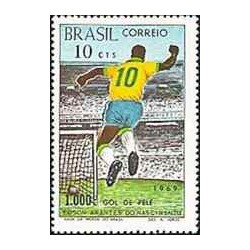- جدید
- ناموجود




توجه : درج کد پستی و شماره تلفن همراه و ثابت جهت ارسال مرسوله الزامیست .
توجه:حداقل ارزش بسته سفارش شده بدون هزینه پستی می بایست 180000 ریال باشد .
توجه : جهت برخورداری از مزایای در نظر گرفته شده برای مشتریان لطفا ثبت نام نمائید.
|
|
This article needs additional citations for verification. Please help improve this article by adding citations to reliable sources. Unsourced material may be challenged and removed. (April 2012) (Learn how and when to remove this template message) |
| Carl F. Auer von Welsbach | |
|---|---|
 |
|
| Born | 1 September 1858 Vienna, Austrian Empire |
| Died | 4 August 1929 (aged 70)[1] Mölbling, Austria |
| Nationality | Austrian |
| Fields | chemistry |
| Doctoral advisor | Robert Bunsen |
| Known for | rare earth elements discovery of praseodymium discovery of neodymium discovery of lutetium |
| Notable awards | Elliott Cresson Medal (1900) |

Carl Auer von Welsbach, also known as Carl Auer, Freiherr von Welsbach (1 September 1858 – 4 August 1929) was an Austrian scientist and inventor who had a talent not only for discovering advances, but also for turning them into commercially successful products. He is particularly well known for his work on rare earth elements, which led to the development of the flint used in modern lighters, the gas mantle which brought light to the streets of Europe in the late 19th century, and for the development of the metal filament light bulb.
Carl Auer was born in Vienna on 1 September 1858 to Therese and Alois Auer. Alois, ennobled in 1860, was director of the Imperial printing office (K.-k. Hof- und Staatsdruckerei) in the days of the Austrian Empire. Carl went to high schools in Mariahilf and Josefstadt. After leaving school in 1877, he joined the Austro-Hungarian Army and was commissioned as a Second Lieutenant.
In 1878 Auer entered the University of Vienna, studying mathematics, general chemistry, engineering physics, and thermodynamics. He then moved to the University of Heidelberg in 1880, where he continued his studies in chemistry under the direction of Robert Bunsen (inventor of the Bunsen burner). In 1882 he received his degree of Ph.D. and returned to Vienna to work as an unpaid assistant in Prof. Adolf Lieben's laboratory, working with chemical separation methods for investigations on rare earth elements.
In 1885, Von Welsbach used a method that he developed himself to separate the alloy didymium into its two parts for the first time. He saw several different colored versions which he named "praseodymium" (green) and "neodidymium" (pink); the latter then became the more common name for the element, neodymium.
Later that year Auer von Welsbach received a patent on his development of the gas mantle, which he called Auerlicht, using a chemical mixture of 60% magnesium oxide, 20% lanthanum oxide and 20% yttrium oxide which he called Actinophor. To produce a mantle, guncotton is impregnated with a mixture of Actinophor and then heated, the cotton eventually burns away leaving a solid (albeit fragile) ash which glows brightly when heated. These original mantles gave off a green-tinted light and were not very successful, and his first company formed to sell them failed in 1889.
In 1890 he introduced a new form of the mantle based on a mixture of 99% thorium dioxide and 1% cerium(IV) oxide which he developed in collaboration with his colleague Dr. Haittinger. These proved both more robust as well as having a much "whiter" light. Another company founded to produce the newer design was formed in 1891, working with fellow student from the university Ignaz Kreidl, and the device quickly spread throughout Europe.
He then started work on development of metal-filament mantles, first with platinum wiring, and then osmium. Osmium is very difficult to work with, but he developed a new method which mixed osmium oxide powder with rubber or sugar into a paste, which is then squeezed through a nozzle and fired. The paste burns away, leaving a fine wire of osmium.
Although originally intended to be a new mantle, it was during this period that electricity was being introduced into the market, and he started experimenting with ways to use the filaments as a replacement for the electric arc light. He worked on this until finally developing a workable technique in 1898, and started a new factory to produce his Auer-Oslight, which he introduced commercially in 1902. The metal filament light bulb was a huge improvement on the existing carbon filament designs, lasting much longer, using about 1/2 the electricity for the same amount of light, and being much more robust.
In 1903 Auer von Welsbach won another patent for a fire striker ("flint") composition named ferrocerium. Welsbach's flints consisted of pyrophoric alloys, 70% cerium and 30% iron, which when scratched or struck would give off sparks. This system remains in wide use in cigarette lighters today. In 1907 he formed Treibacher Chemische Werke GesmbH to build and market the devices. In 1920 he received the Siemens-Ring as his name had become a synonym for the rise of artificial lightning.
Over the rest of his life he turned again to "pure" chemistry and published a number of papers on chemical separation and spectroscopy. He presented a major paper on his work on the separation of radioactive elements in 1922.

Fascination Light commemorative coin
تشکر نظر شما نمی تواند ارسال شود
گزارش کردن نظر
گزارش ارسال شد
گزارش شما نمی تواند ارسال شود
بررسی خود را بنویسید
نظر ارسال شد
نظر شما نمی تواند ارسال شود

check_circle
check_circle















